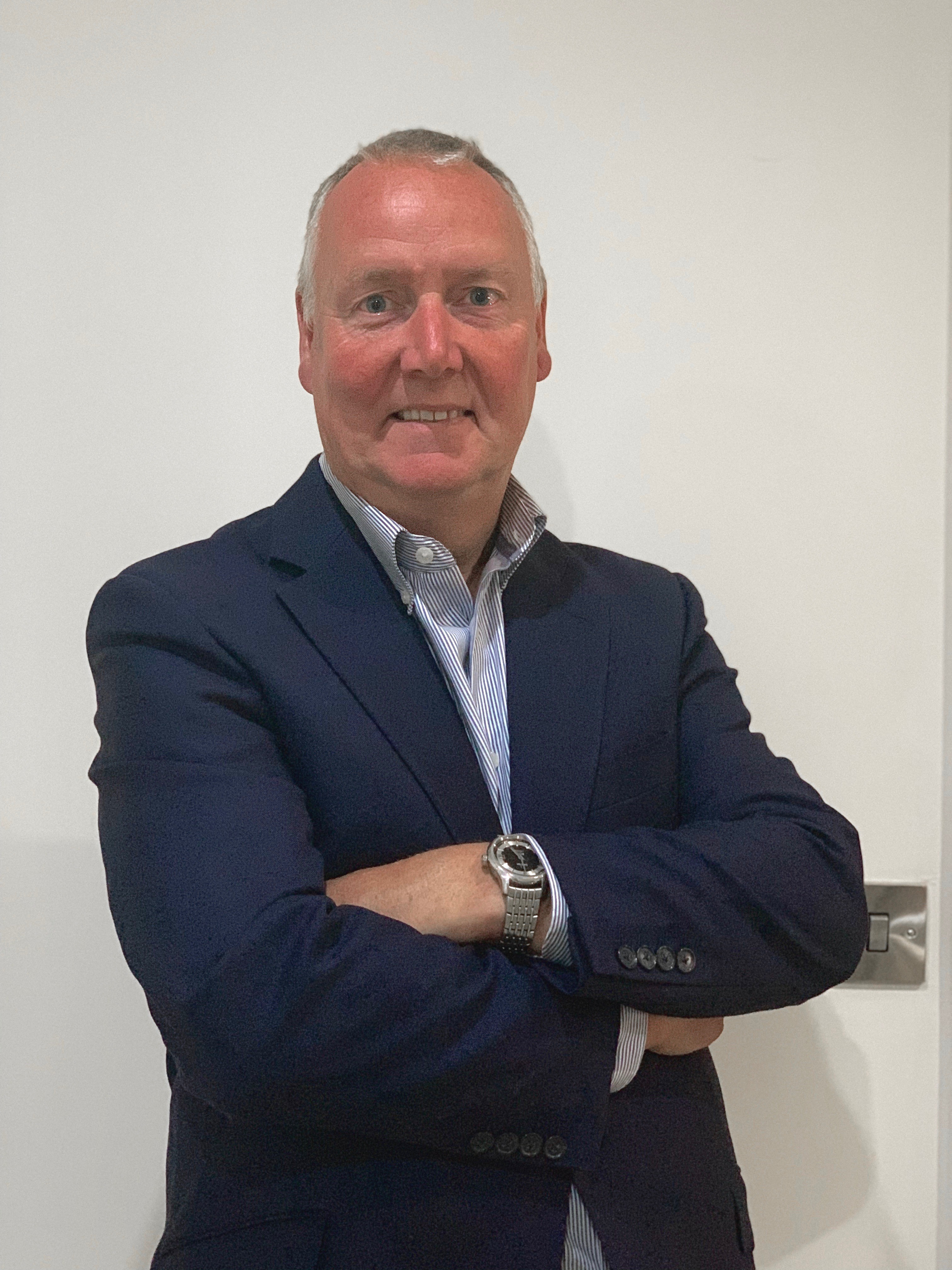- About us
- What we do
- Careers
- Investors
- Insights
- Client portal
How to self-fund business transformation for growth and recovery post-COVID

In a year where certainty has been overshadowed by doubt and the way in which businesses have been able to operate has changed dramatically for the foreseeable future, there is increased pressure on businesses to rethink their strategies and cut costs.
In our recent webinar ‘How to self-fund business transformation for growth and recovery post-COVID’, guest speaker David Ashcroft from the Retearn Group reflected on how organisations must create new propositions to become relevant to customers’ new expectations, new regulations and new constraints, all while driving cost out and efficiency up. Access the on-demand version or continue reading for a summary.
The winners and losers of COVID-19
The impact of COVID-19 on businesses across the world has been completely unprecedented. However, businesses and sectors have been impacted in very different ways. As we now know, the most negatively impacted businesses have been high street retailers, airlines and the wider hospitality and travel industries. Business travel, in particular, has been hit hard and is forecast to be the industry that will take the longest time to recover. Large hotel chains, for example, receive approximately 70% of their bookings from business travellers. Demand for fuel has also plummeted, with oil prices dropping by 30% during the first two months of lockdown.
However, there have also been winners in this time, too. Unsurprisingly, the healthcare sector has seen a huge increase in demand for products and services, from drug supplements, PPE to testing equipment to the extraordinary investment that has been placed into research and development for vaccines and other treatments. Similarly, during lockdown, B2B and B2C consumption has shifted massively online and accelerated digital adoption. In turn, that has increased demand for IT products and services, making that sector one of the biggest winners of all.
The importance of proposition relevance
When we think of those winners and losers and how circumstances have driven either growth or decline, this assumes that all of these companies were either victims or benefactors of circumstance, but David believes the story is more complex. He suggests that, whilst all companies have been trying to adjust to the situation and find their own way through this, the biggest factor in success is the ability for businesses to redefine their ‘proposition relevance’ to suit the new world.
David continues:
“I believe a major factor in what really drives the difference between success and failure is relevance, particularly what I call ‘proposition relevance’ – the ability of a business to present, develop or adjust their proposition so that it is relevant to the market in which it operates at a particular time and place.”
But what drives relevance? Relevance is an outcome of a number of different factors that combine to define an organisation’s relationship within its market: the product, the services, the price, the customer experience, the engagement, channels, locations, brand and even ethics. All of these have a part to play in defining the proposition relevance to the customer.
Relevance drives demand and increased demand results in revenue growth and potentially a fast route to recovery. Of course, the reverse is also true – having a proposition that is no longer as relevant, leads to revenue decline and longer-term problems.
If we consider these characteristics, it’s true they have shifted significantly during the coronavirus pandemic. However, experts such as McKinsey argue that COVID-19 has simply accelerated pre-existing trends that have been growing over the past 10 years, due to factors such as the speed of digital adoption and the shifting societal perceptions on the importance of social responsibility and environmental sustainability, for example.
In either case, it is clear that COVID-19 has changed the business landscape beyond recognition. Products, services, locations, experience and perceived values have all shifted. With this in mind, every business should be thinking, if it hasn’t already, about whether or not their business proposition has become more or less relevant.
David suggests all businesses should ask themselves these questions:
- Will my business proposition be relevant in a recovering economy?
- What must we do to attain market relevance?
- How can we afford change?
Answering these questions will help to set the agenda for what David calls ‘proposition transformation’.
Proposition and operational transformation
Transforming your business proposition will require looking into areas such as brand development, strategic growth, customer experience and proposition delivery. But this will be a time-consuming and often costly task at a time when discretionary spend is at an all-time low, requiring a demand on resources. So how do you buy yourself more time, or find the money to carry out this review? Here is David’s advice:
“The answer is partly through operational transformation and what I call the balancing leg of business transformation. If we consider the proposition to be the shop window and what the customers see, then the operation is the engine room that produces, delivers and supports the proposition, which is largely hidden from view from the customer.”
“While proposition transformation delivers outcomes of market relevance and ultimately drives growth, operational transformation delivers outcomes of efficiency, effectiveness, speed, agility and ultimately drives reduced cost to service and hence margin improvement. This process can also help fend off creditors while waiting for market upturn, so operational transformation is definitely a valid strategy to undertake at this time.”
When undertaking any form of business transformation model it is important to remember that, when adjusting the proposition or operation, you need to keep both sides in alignment and working together so you don’t compromise your ability to compete effectively.
David continues:
“Making a change to either side of the model necessitates changes on the other side. If you make changes to the proposition, then you will inevitably need to make changes to the operation, or vice versa. It is imperative that when we execute transformation, both sides of the equations are kept aligned and designed with reference and integrity to each other.”
"If proposition transformation delivers the capabilities to drive revenues and growth, and operational transformation delivers a low cost margin improvement, together, we’ve potentially found the Holy Grail of transformation, which is sustainable profits and, of course, shareholder return.”
Funding business transformation
Businesses need to prepare for uncertain times ahead, all whilst dealing with intensifying cost pressures. Operational transformation might be able to fund proposition transformation but, of course, operational transformation also takes time and costs. So where do businesses find the money?
Here’s what David has to say:
“I believe for many businesses, the answer lies within your procurement function and, in particular, with your indirect spend. In most sectors, total indirect spend is equivalent to between 15% and 30% of total revenue. Therefore, any reduction in this spend can result in millions of pounds of savings, which can be used elsewhere.”
“This is what we call the self-funded transformation. It’s money that already exists and you take it out of procurement and third party spend and use it on the things you really need to remain relevant.”
Summary and key takeaways
We’ve all seen first-hand how COVID-19 has made many years, decades even, of our working ways redundant or less relevant. Structures that have taken years to put in place have been changed overnight.
But there have been a number of positives learnt throughout the coronavirus crisis. Cross-company collaboration, even between competitors, for example has increased dramatically, as businesses came together in launching new prototypes that would usually take years, in weeks or even days.
But will these new working ways persist, or when COVID-19 eventually fades, will staff return to expensive offices and be governed by procedures and policies that were dreamed up in the previous century?
David reflects:
“We can’t change what has happened, but every business should review whether their business proposition has become more or less relevant as a starting point. Transformation and evolution are key to being ready for the future.”
Key questions to ask your business
- Is or will your proposition be relevant in a post-COVID world?
- If it isn’t, what is it that you need to change specifically?
- How will you fund that transformation?
- How much saving could you release from procurement within your business? Could this fund the transformation you require?
- Whilst spending money on transformation could be costly, how much will inaction cost?
During our live Q&A session, David also answered the following questions, the answers to which can be found within the on-demand recording:
- Have you got a good example of where a business has transformed their proposition well, in line with a changing market or to be more relevant to their customer base?
- What are the first steps that companies should take in understanding their indirect spend?
- How should businesses approach their supply chain to realise cost savings?
- Has productivity improved during COVID-19 with people working remotely?
- What is the best way to deal with resistance to transformation programmes and get buy-in across the business?
- What are the key reasons that transformation programmes fail and what are the main pitfalls for businesses to avoid?

Retearn Group’s Head of Business Transformation, David Ashcroft, has 30 years’ experience in helping businesses become as lean, efficient and profitable as possible, whilst driving future growth through strategic evolution. Retearn Group’s Self-Funded Transformation programme, in particular, is designed to help clients find the capital for operational or propositional transformations, by finding cost savings within the business. Transforming whilst saving cost or achieving cost neutrality makes Retearn’s model an ideal solution for a range of businesses recovering from the impacts of the global pandemic.
Find out more about self-funded business transformation
Should you wish to talk to David or Retearn Group about self-funded business transformation, please get in touch with events@gattacaplc.com.
Creating cost-savings through your contingent workforce
Furthermore, as David attested in the webinar, one of the biggest areas of indirect spend within organisations is recruitment & contingent labour, contributing approximately 7-11% of indirect spend.
To identify and exploit cost savings opportunities within this category, read our article and watch our on-demand webinar on how to create cost savings through your contingent workforce.
Gattaca Solutions offers a range of workforce solutions for temporary and permanent staffing that deliver our clients sustainable cost savings, whilst improving the quality, efficiency and compliance of their recruitment processes. If you would like to find out more, please explore our workforce solutions or get in touch with one of our experts.
